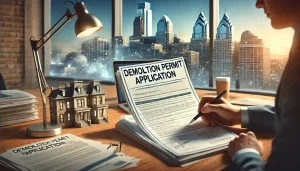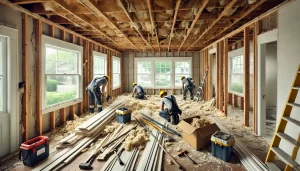A push toward greener construction is one of the most significant changes we’ve seen in the building and construction industry over the last few decades.
Sustainable materials play an essential role in the green building industry. In this article, we’re going to explore some of the sustainable materials Connecticut business owners can use when building a commercial property and some of the incentives available to the owners of commercial buildings that go green.
Types of Sustainable Building Materials
Sustainable Construction Materials
There’s a wide range of different sustainable construction materials available. These materials won’t be usable in all commercial construction; budgets and scope play an important role in determining which of these materials Connecticut businesses can take advantage of. Here are a few examples:
- Recycled steel
- Bamboo
- Straw bales (for insulation)
- Cross-laminated timber (CLT)
- Recycled plastics
All of these materials can be applied in different circumstances; it’s essential to talk to your contractor about which sustainable materials are best for your construction project.
Cross-laminated timber, for example, is an excellent, renewable building material with a number of advantages, but it’s almost exclusively manufactured in the Pacific Northwest. As such, shipping the material to Connecticut increases its price. The product becomes less green than it otherwise would be, as fuel is needed to transport it.
Renewable Energy
Renewables must be considered when discussing sustainable building materials. With the availability of rebates and power buybacks, commercial construction projects in Connecticut can often benefit by including solar panels and other sources of renewable energy.
Energy sources are important to discuss with your construction contractor, as they have a substantial impact on how your building will be wired.
Green Construction Techniques
Another topic which falls under the purview of sustainable building materials is green construction techniques. These include:
- Passive heating and cooling
- Pollution mitigation and waste control
- Using locally sourced construction materials
- Green roofing
- Water reclamation
- Hyper-insulation
- And more
All of these techniques can be impacted by the use of sustainably-sourced materials. Green roofing, for example, uses plant life as an element of your building’s roof—that’s inherently sustainable. Insulation can be made from recycled plastics or straw bales. You can find locally-sourced recycled steel. Even waste control techniques can be adapted to be more environmentally-friendly and sustainable.
The Advantages of Building Using Sustainable Materials
There are lots of reasons for Connecticut businesses to hire contractors who know how to use sustainable materials. We’ve grouped these reasons into two broad categories: Access to funding, and creating a greener world.
Access to Funding & Rebates
When you build with an eye to sustainability, financing and other incentives become available to you.
One of the biggest providers of this type of financing is the Connecticut Green Bank. With the Commercial Property Assessed Clean Energy (C-PACE), funding is available to new green buildings. Almost any of the points we’ve discussed in this article may make your project eligible for C-PACE funding.
Incentives also exist at a federal level; with renewable energy, for example, you may be eligible for the Business Energy Investment Tax Credit (ITC). New benefits are constantly being introduced at state and federal levels.
Your energy supplier is also a potential source of funding and rebates—United Illuminating, for example, offers a number of different incentives for green buildings, starting at the construction stage.
Creating a Greener World
Tackling climate change is good for the world—and it’s good for business. By building sustainably with an eye toward energy efficiency, you can help your building earn awards like LEED certifications. Awards like these can help your business stand out from the crowd and signal to climate-conscious clients that you’re trying to help build a greener world.
Conclusion
Through the use of natural resources and renewable resources, there are many sustainable building materials that Connecticut building owners can use for their next commercial project. By coupling energy-efficient practices with these sustainable materials, building owners can lower their carbon footprint and create eco-friendly green buildings.
We’re CT commercial construction experts, and we know about the rebates, sustainable materials, and regulations in the state. Contact us today!





